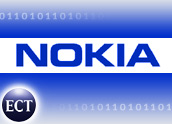
Mobile phone makers and carriers are capturing the lion’s share of the buzz at the annual CeBIT trade show this week, with vendors rolling out new products aimed at accommodating the next generation of wireless services and the rise of mobile commerce.
A slew of new and upgraded technology has been unveiled at the CeBIT show in Hannover, Germany, from phones with digital picture capabilities rivaling that of standalone cameras to music downloading services, from phones with removable flash memory cards to deals aimed at beefing up Web-ready wireless networks.
The show’s heavy emphasis on wireless underscores what many analysts have preached: that 2005 will be a key year in the evolution of wireless services, with improvements in handset technology, expansion of 3G-enabled networks and more mobile-friendly content all converging into a rapidly changing marketplace.
Fundamental Shift
“We are at the beginning of a fundamental shift not only in the way networks operate, but also in the way people are accessing and using those networks,” Lucent Technologies CEO Patricia Russo said as her company announced US$200 million worth of network deals with European wireless carriers.
“In Europe, for instance, we are seeing increased demand for such applications as home networking, IP-video and online gaming, as well as increased interest in using the latest innovations to improve productivity,” Russo said.
Among handset makers, Samsung has grabbed the most headlines this week and the breadth of its offerings underscores that the industry might be growing in a number of different directions.
Samsung debuted a 7-megapixel digital camera phone that it says will produce images as clear as many high-end standalone cameras. It also brought a prototype of its next-generation smartphone, one equipped with a hard-disk drive and designed to run Windows Mobile software. That phone has 3 GB of storage, more than double the amount on Samsung’s first “hand-drive” phone and more than any other similar product on the market.
The hard drive will enable the phone to have as much MP3 capability as a standalone player, such as the Apple iPod, Samsung said. It also will enable the phone to store and transport other types of files.
Music Market
Other vendors were close on Samsung’s heels with their own rollouts. Motorola announced it was working on expanding its in-development family of iTunes-ready phones, though it also said the phones would not hit market as quickly as first hoped. The first iTunes phone was expected to be debuted at the show, but the launch was postponed at the last minute.
Sony Ericsson has made it clear it wants to use its experience in portable music to be a player in the phone/music player market, offering a preview of its W800 “Walkman” digital music player phone.
On the network side, in addition to the Lucent deal, the German division of UK-based mobile operator O2 said it would work with Nokia and Loudeye on a music download service.
Some major handset makers, including Nokia, have taken a pass on CeBIT, which began just two weeks after an earlier wireless conference in France. Still, analysts say it appears consumers will be deluged with choices in the next year or so.
“Handset makers are going to position themselves to cover all the angles in the market,” Gartner analyst Ben Wood told the E-Commerce Times.
For instance, many of the new, feature-laden phones will come with hefty price tags, in some cases well above $500 in the U.S. At the same time, those same phone makers are churning out low-cost phones. Some are betting on specialty phones with MP3 players or high-quality cameras, while others hope to rollout all-in-one models.
Wide Range of Services
Sales of those expensive, high-end phones will be important to handset makers, with overall growth of phone sales expected to slow down this year compared to double-digit growth posted for 2004, according to a forecast from Strategy Analytics.
They are also important because they can handle a wider range of services and enable everything from music download services to direct m-commerce to be at consumers’ fingertips.
“If wireless services don’t take off, it won’t be for lack of handsets to choose from,” Wood said.
A more likely bottleneck is in the network bandwidth arena, which is likely to keep wireless TV in the test phase for some time and could delay uptake of wireless Web browsing, online buying from mobile devices and even highly touted music services.
EMarketer Senior Analyst Noah Elkin said the U.S. in particular appears set to lag behind overseas counterparts in 3G rollout.
“The networks will trickle down here as well, eventually,” Elkin said. “But questions remain about carriers’ ability to upsell users to more expensive handsets and costlier service plans.”
























































Social Media
See all Social Media